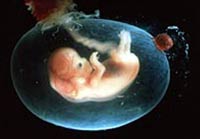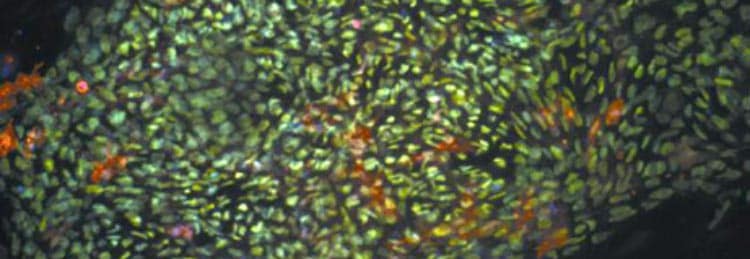Amniotic Derived Stem Cells
Amniotic membrane and fluid derived Stem cells (AFS) are considered a powerful and non-controversial resource for cells that are used in transplantation therapy, mainly due to their extremely high renewal capacity

Amniotic derived cells are found in the amniotic fluid and membrane. They are also considered adult stem cells and are known to have a multifunctional capacity and multiple potency as well, as these can develop into osteogenic, myogenic, adipogenic, hepatic, neuronal, and endothelial cells.[1]
Amniotic derived stem cells are the result of a unique mixture of cells from both amniotic fluid as well as the amniotic membrane. These powerful cells are acquired without the objections of embryonic derived stem cells yet are extremely powerful for use in Regenerative therapies. These cells can be differentiated into many tissue types for treatment in skin disorders, cartilage damage, cardiac tissue and heart disease, Neuro conditions like MS,ALS, MND, muscle damage and even bone.[2]
The most important characteristics and benefits of enhanced AFS’s is that they are non-cancerous ( teratomas ) when transplanted to patients and are characterized by a very low antigenicity which represents a big advantage for our cell transplantation therapies. The Amniotic cells are isolated during the process of amniocentesis which means they are free from the ethical constraints and do not injure the fetus in any way.[3]
Published Clinical Citations
[1] ^ A M Ghanem, F M Zaher, A G Salman, R M Nabil, Comparison between limbal stem cell versus dry amniotic membrane transplantation in treatment of primary pterygium, QJM: An International Journal of Medicine, Volume 113, Issue Supplement_1, March 2020, hcaa058.032, https://doi.org/10.1093/qjmed/hcaa058.032
[2] ^ Borzou, B., Mehrabani, D., Zare, S., Zamani-Pereshkaft, M. and Acker, J.P., 2020. The Effect of Age and Type of Media on Growth Kinetics of Human Amniotic Fluid Stem cells. Biopreservation and Biobanking. https://doi.org/10.1089/bio.2019.0103
[3] ^ Harrell, C.R., Fellabaum, C., Markovic, B.S., Arsenijevic, A. and Volarevic, V., 2019. Therapeutic potential of “Exosomes derived Multiple Allogeneic Proteins Paracrine Signaling: Exosomes d-MAPPS” is based on the effects of exosomes, immunosuppressive and trophic factors. Serbian Journal of Experimental and Clinical Research, 20(3), pp.189-197. https://doi.org/10.2478/sjecr-2018-0032

